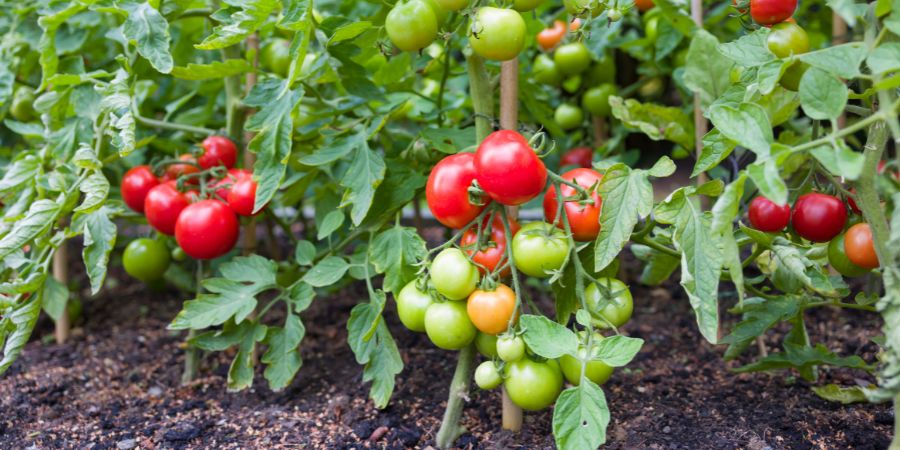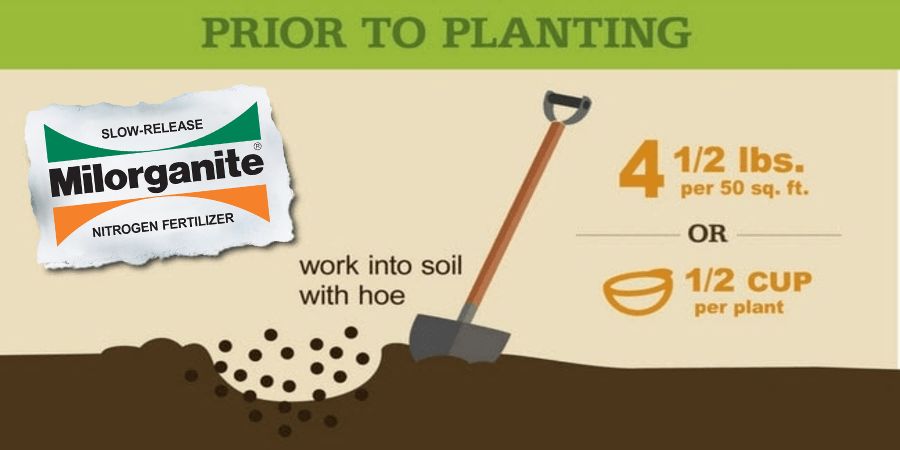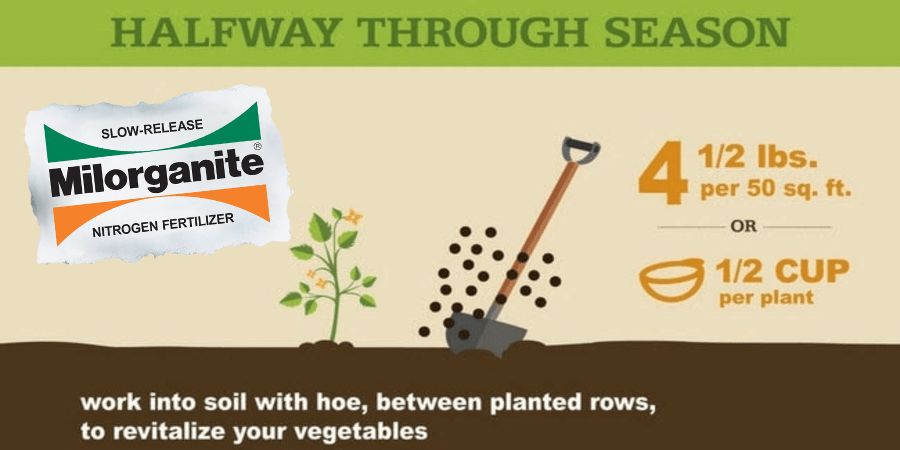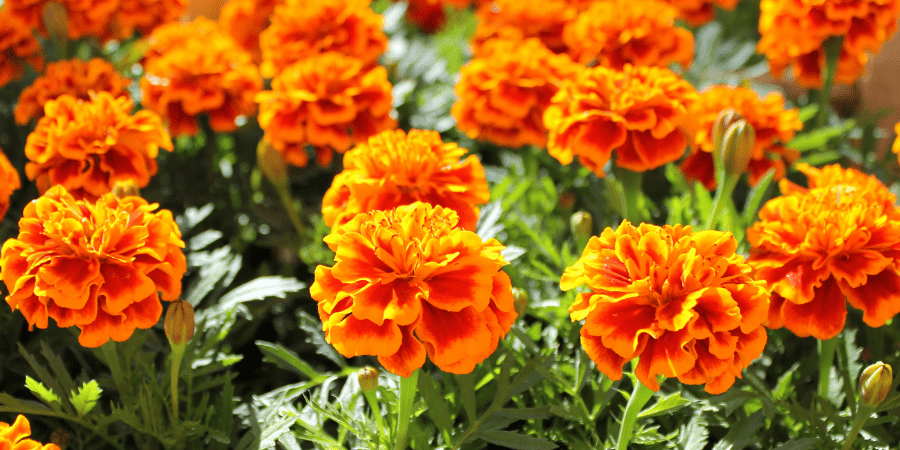Fertilizing Your Vegetables With Milorganite®
- Milorganite AgronomistJune 3, 2023
The addition of a little Milorganite now, whether you’re just preparing your vegetable garden or if you’ve already planted this year’s crops, will result in an abundant harvest throughout the season.
The phrase has grown so common it’s kind of a cliché: “There is nothing like a home-grown tomato!” It’s likely so common because it’s true! Not just tomatoes. Nothing compares to growing your own produce. It’s the freshest you can get, and there’s great satisfaction in growing and harvesting produce you’ve started from seeds or plants from the garden center.

Is it Safe to Use Milorganite on Vegetables?
Yes, Milorganite is an excellent and safe fertilizer for all plants that grow outdoors, including vegetables. Milorganite’s slow-release nitrogen feeds plants evenly and gradually, without interfering with flowering and fruit development. This nurtures the roots, which in turn develop more robust yields. Other fertilizers force unnecessary top growth, which makes for skinny plants with reduced yields.
Milorganite is heat-dried in large-scale, bus-sized rotary dryers that operate at 900–1200°F. The extreme heat and dryness kills pathogens.
Milorganite Feeds the Soil, Then Your Plants
The nutrients in Milorganite are eaten by the thriving ecosystem in your soil. Once the nutrients are released, they’re available to the vegetables in your garden over several weeks. Milorganite adds much needed nutrients to the soil and it’s abundant in organic matter, which conditions the soil and helps to retain moisture.
How Much Milorganite for Vegetable Gardens?
Milorganite is a safe, slow-release fertilizer you can use on all your vegetables and flowers when used as directed. It’s also non-burning, so you can’t accidentally harm young plants.
Before planting, rototill or hoe to work into the soil 4.5 lbs. (13 ½ cups) of Milorganite per 50 sq ft of garden. Work it in to a the rooting depth of the plants you’ll be growing. It’s like serving a buffet right where the roots eat. Now is also a good time to add 2–3 inches of organic matter, such as compost or composted manure, to the soil. A layer of mulch around plants will help keep weeds down and conserve water.

If you have already planted your vegetables, apply ½ c of Milorganite around each plant and gently work it in. If your garden needs a mid-season boost, add the same measures of Milorganite as above and gently work it into the soil being mindful to not damage the roots. Milorganite can also be applied on top of mulch, but it will take longer for the nutrients to reach the soil. An option is to push back the mulch from around plants, work in the suggested amount of Milorganite, then push the mulch back into place.

Companion Plants in Your Vegetable Garden to Discourage Insects
Some plants are known to deter insects based on their natural aroma, oils, compounds, and even color. You can help naturally deter harmful insects from munching on your vegetables by growing select plants together. It’s known as companion planting.
Some plants attract beneficial insects that dine on other insects that would be harmful to the vegetables you planted. Growing different plants and flowers in the same bed can add variety and a decorative element to your garden.
Some insect-deterring companion plantings have been scientifically proven, while others have been passed down through generations of gardening trial-and-error—gardening wisdom. Try a few companion plantings in your garden this year and see what works. Maybe you’ll discover the newest planting combo that will be used for generations to come!
Here are just a few known companion plantings to consider.
Four o-clocks
Japanese beetles can be detrimental to your yard and garden, especially if you grow one of their favorites, including fruit trees, crape myrtle, and roses, among many others. Four o’clock, which are easy to grow and have a lovely evening aroma, are a fatal favorite among Japanese beetles. The plants are poisonous and will kill the beetles. Be careful, they’re also poisonous to people and animals, so keep kids and pets away.
Marigolds
Marigolds are one of the best-known plants for repelling a wide variety of insects and pesky animals, including rabbits. The scent from various types of marigolds repels a number of insects, including aphids, mosquitoes, Mexican bean beetles, and whiteflies, and kills nematodes. Grow marigolds in sunny locations throughout your vegetable garden, especially near potatoes, tomatoes, peppers, eggplants, and roses.

Chrysanthemums
Chrysanthemums (mums) contain pyrethrum, which is commonly used in commercial pesticides to can control mosquitos, roaches, ticks, silverfish, lice, fleas, bedbugs, and ants. White flowering mums are said to deter Japanese beetles in the garden. Plant mums near tomato plants, but avoid neighboring them near the lettuce. Some plants simply don’t make good neighbors!
Nasturtiums
If you’re a plant, nasturtiums are welcomed, as neighbors. They’re fantastic companion plants! They emit an airborne chemical that repels insects, particularly those that enjoy chomping on your garden vegetables, including whiteflies, squash bugs, aphids, several beetle varieties, and cabbage loopers. Plant nasturtiums near tomatoes, cucumbers, kale, kohlrabi, collards, broccoli, cabbage, and radishes.
Petunias
Petunias are an easy-to-grow annual, available in a wide variety of colors, that can help repel a range of aphids, asparagus beetles, leafhoppers, squash bugs, and tomato hornworms, among other pests. Plant them in sunny areas near herbs and vegetables, particularly basil, beans, peppers, potatoes, and squash.
Sunflowers
Companion plants can help to drive away pests, or in the case of the sunflower, they attract aphids and draw them away from harming other plants. Ants will move their colonies onto sunflowers. Sunflowers are tough and suffer no damage.
Prepare now for the satisfying bumper crop of vegetables you’ll be harvesting in a couple of months. You know your neighbors are relying on you and your excess produce—especially zucchini.
Research Demonstrates Milorganite is Safe to Use on Edible Plants
A study conducted at the University of Florida grew tomatoes in test plots using natural organic fertilizers, a water-soluble fertilizer, and Milorganite then examined heavy metals, other elements of concern, nutrient elements, as well as other elements found in the fruit.
The study found that the amounts of elements varied by fertilizer application, and “there were no significant differences in the content of heavy metals and elements of concern of tomato fruits among plants fertilized with natural organic fertilizers, the chemical fertilizer, or biosolid fertilizer [Milorganite].” (Snyder, G., and Cisar, J. 2013. Heavy Metal Content of Tomatoes Fertilized with a Biosolids.)
A study conducted at the University of Wisconsin–Madison found that Milorganite outperformed several other popular fertilizers, as well as a Milorganite-based fertilizer supplemented to achieve a higher nutrient analysis. The study found that Milorganite, at various rates, produced the greatest amount of tomatoes and that tissue analysis “showed that there were no significant differences in the amount of heavy metals found in any of the tomatoes, whether they were fertilized or not. In fact, unfertilized tomatoes sometimes contained the highest metal concentrations.” (Kussow, W., and J Iyler. 1996. Milorganite’s effectiveness as a fertilizer for tomatoes.)
| Metals and Micronutrients | EPA Exceptional Quality Limit | 2023 Milorganite Average |
|---|---|---|
| Arsenic | 41 mg/kg | 4.2 mg/kg |
| Cadmium | 39 mg/kg | 0.48 mg/kg |
| Copper* | 1,500 mg/kg | 220 mg/kg |
| Lead | 300 mg/kg | 28 mg/kg |
| Mercury | 17 mg/kg | 0.23 mg/kg |
| Molybdenum* | 75 mg/kg | 11 mg/kg |
| Nickel | 420 mg/kg | 26 mg/kg |
| Selenium | 100 mg/kg | 4.8 mg/kg |
| Zinc* | 2,800 mg/kg | 440 mg/kg |
PFAS Chemicals and Fertilizing Vegetables
The PFAS issue in biosolids fertilizer, like Milorganite, is a relatively new issue, for more information, view the PFAS fact sheet by the California Association of Sanitation Agencies.
There is no clear indication that Milorganite fertilizer has a PFAS build-up that needs remediation. Experience has shown that PFAS concentrations in biosolids vary significantly depending on local conditions, such as the type of water supply, the presence of fire suppression training sites, and industries that manufacture or use PFAS.
For Milorganite fertilizer, local conditions that contribute to the production of our product favor low concentrations. In fact, for PFAS sampling for Maine, concentrations for two of the three analyzed compounds were below the level of detection, and the third was slightly above the level of detection, confirming minimal PFAS risk.
To understand and find solutions to the PFAS problem, Milorganite fertilizer supports (1) research into the fate of and risk from the PFAS that already exist in commerce and the environment and (2) restrictions on the continuing production and use of these chemicals. The entire water reclamation community is engaged with these issues. No individual producer of biosolids can address these issues alone. Please consider contacting your legislators to support action on these issues.

